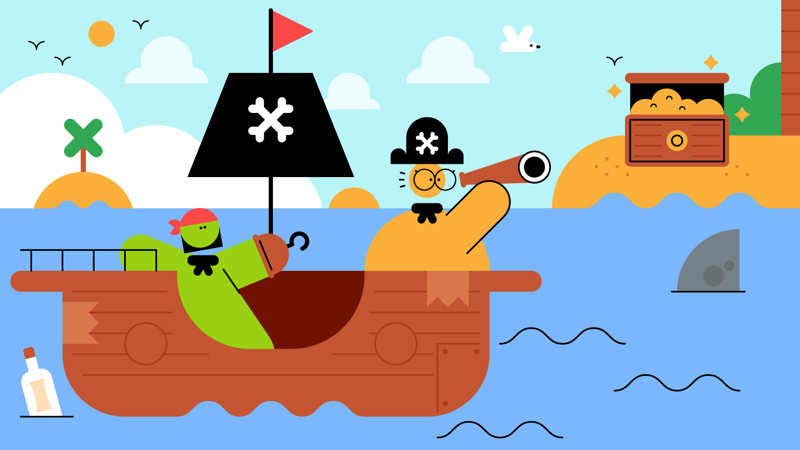
Cardboard captains
You’ll need
- Clean items of recycling
- Cardboard tubes
- String
- Masking tape
- PVA glue
- Newspaper
- Big cardboard boxes
Before you begin
- Cover areas of the floor with newspaper (or plastic sheeting) to protect it from paint.
- Make sure everyone has an apron, or comes wearing old clothes they can get messy. You could make aprons by cutting a head hole and two armholes in a plastic bin bag.
Make the nautical world
- Everyone should imagine the floor is the sea.
- Everyone should think about the sorts of things they’d expect to see in the sea; people should take it in turns to share their ideas. Would people expect to see boats and islands and trees? What about animals such as sharks and turtles?
- Everyone should take a few moments to think about what they might like to build. The person leading the activity should organise everyone into groups to create boats, palm trees, or sea creatures.
- The person leading the activity should make sure the teams have enough boxes and materials to build their models.
-
- Boats could be made out of cardboard boxes with round portholes drawn or cut in and newspaper sails. It doesn’t matter how big they are – you can decide on the scale of your sea.
- A rolled up newspaper would make a great palm tree trunk for green paper leaves.
- Empty plastic tubs could be turtle shells.
- Milk bottles could become sharks.
- Once everyone has a basic model, they should take a break to look at each other’s creations. It doesn’t matter if people’s aren’t quite finished. Everyone should make useful suggestions, for example, about what else people could add to their model.
Perhaps someone could suggest using a paper plate and split pin to make a steering wheel, or a cardboard tube for a telescope. People could use scrunched up paper to make bananas (or another fruit) for a tree.
- Everyone should finish their models. They may want to make changes or add things based on people’s suggestions.
- Everyone should enjoy playing in their nautical world. Depending on how big it is, people may be able to get into the boats to play, or they may need to use toys to be the sailors (or the pirates!).
Reflection
This activity needed everyone to try out a range of skills to create something new from recycled materials. Which bit did everyone enjoy most? Did anyone learn any new skills or make any changes to their ideas? Some people may have found that rolling a few sheets of newspaper together was stronger than one sheet, or maybe someone found a new way of making a tree from newspaper. The person leading the activity might be able to point out some great examples of people being resourceful. Well done to everyone who worked together to solve problems and create a fun new world.
Safety
All activities must be safely managed. You must complete a thorough risk assessment and take appropriate steps to reduce risk. Use the safety checklist to help you plan and risk assess your activity. Always get approval for the activity, and have suitable supervision and an InTouch process.
- Scissors
Supervise young people appropriately when they’re using scissors. Store all sharp objects securely, out of the reach of young people.
- Glue and solvents
Always supervise young people appropriately when they’re using glue and solvent products. Make sure there’s plenty of ventilation. Be aware of any medical conditions that could be affected by glue or solvent use and make adjustments as needed.
- Rubbish and recycling
All items should be clean and suitable for this activity.
You could design and make nautical uniforms from newspaper – cut head holes into double sheets of paper, and fold paper into hats.
Make it accessible
All Scout activities should be inclusive and accessible.
You could make up a story or adventure in your nautical world (either as a small play, or a show with toys as characters). How could you perform or record the adventure?
You don’t have to stick to a nautical world – perhaps people have different ideas for a space to create, for example, outer space or a jungle.

